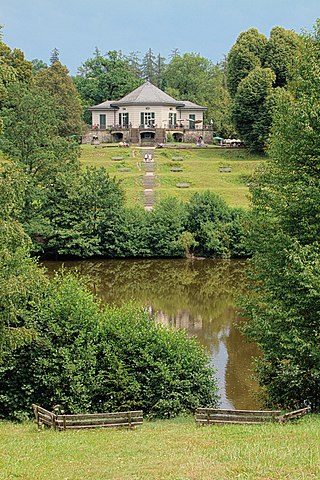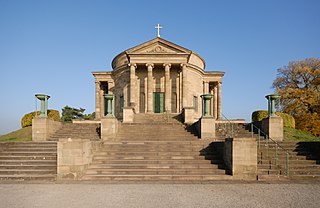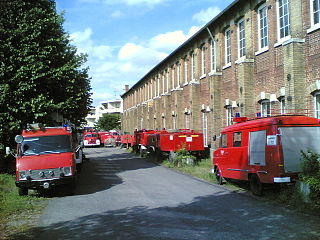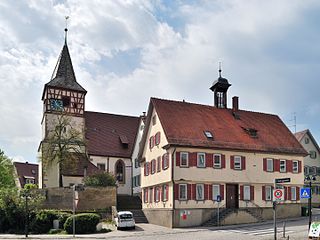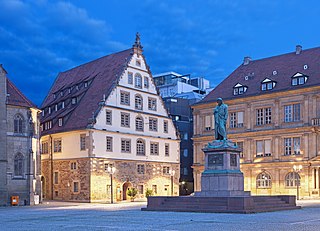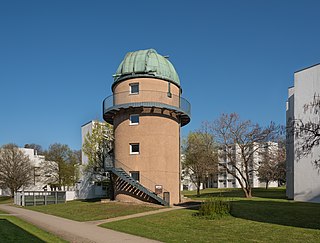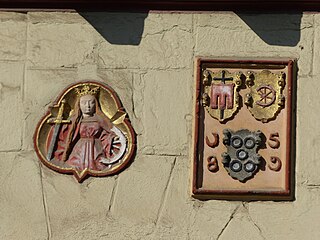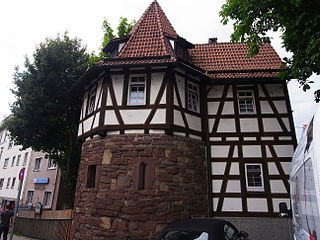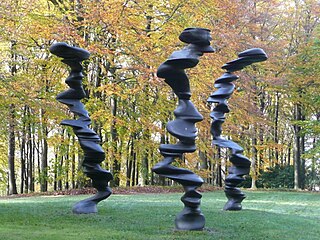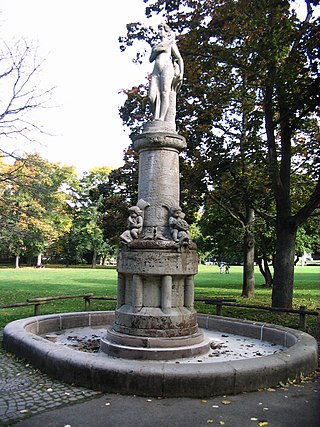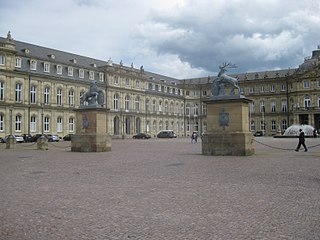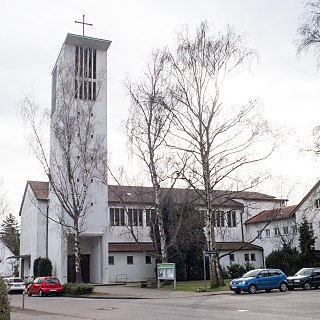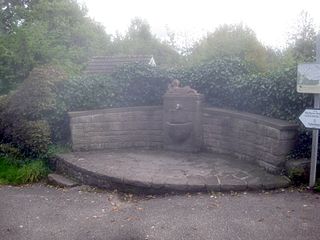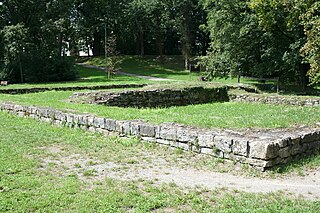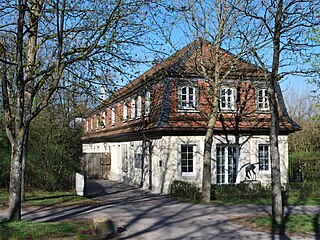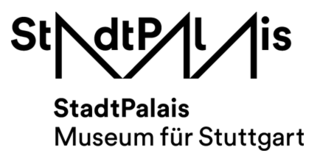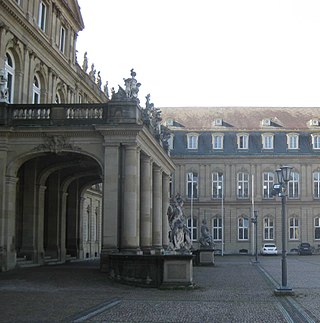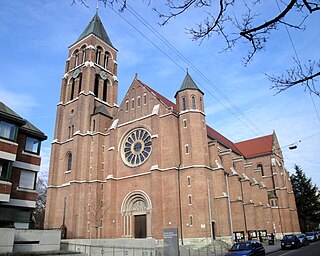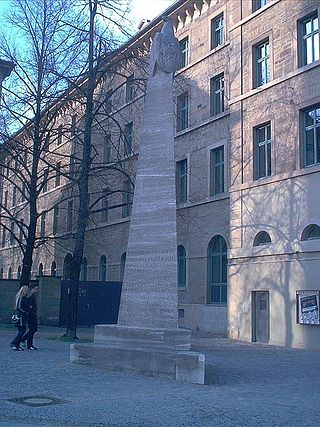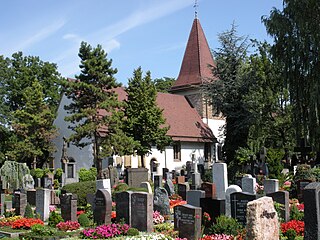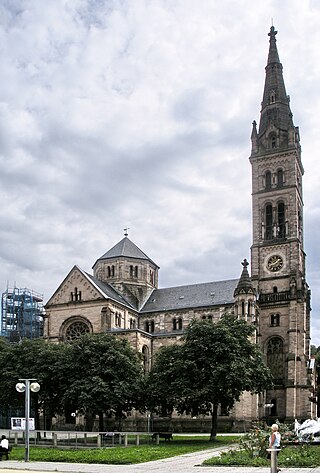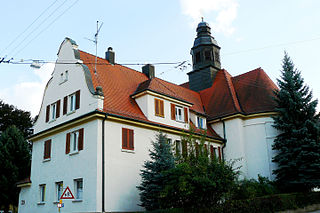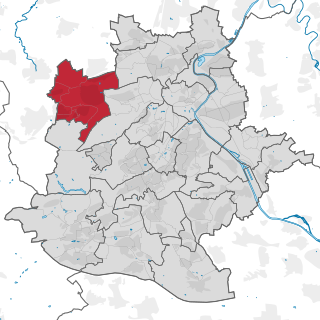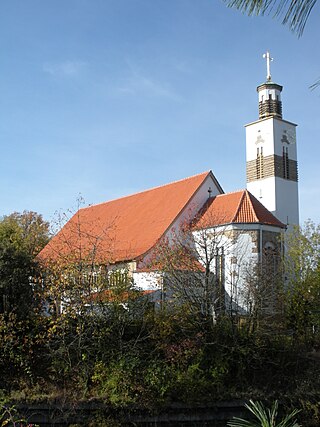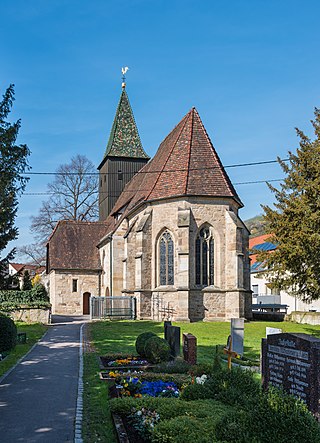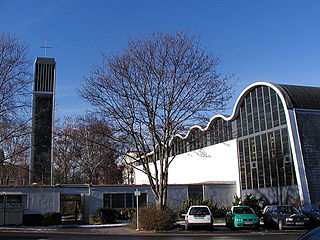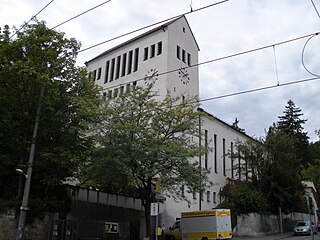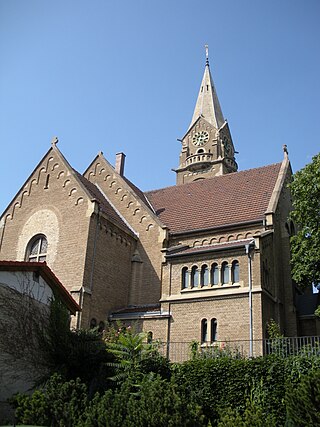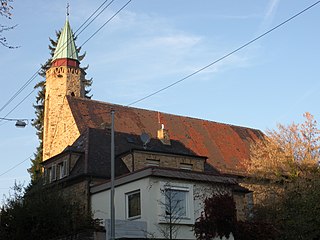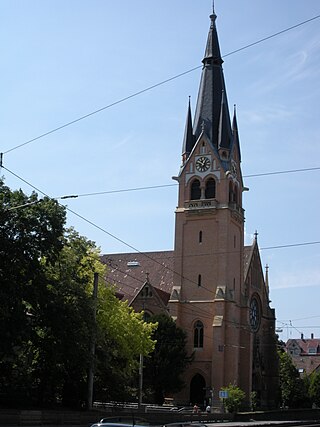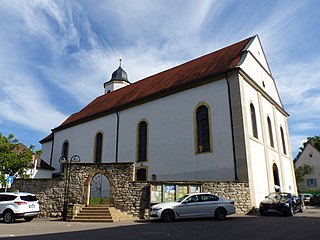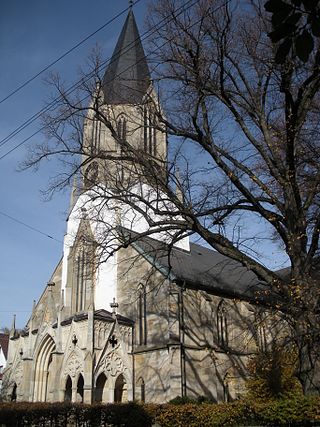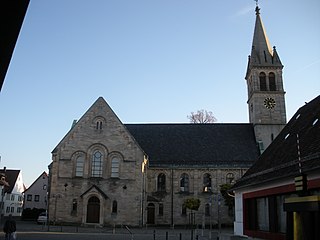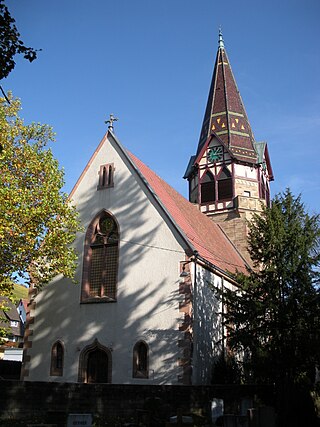83 Sights in Stuttgart, Germany (with Map and Images)
Legend
Premium Sights
Book tickets, guided tours and activities in Stuttgart.
Guided Free Walking Tours
Book free guided walking tours in Stuttgart.
Welcome to your journey through the most beautiful sights in Stuttgart, Germany! Whether you want to discover the city's historical treasures or experience its modern highlights, you'll find everything your heart desires here. Be inspired by our selection and plan your unforgettable adventure in Stuttgart. Dive into the diversity of this fascinating city and discover everything it has to offer.
Sightseeing Tours in StuttgartActivities in Stuttgart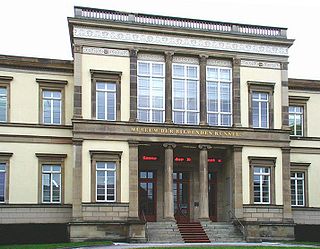
The Staatsgalerie Stuttgart is an art museum in Stuttgart, Germany, it opened in 1843. In 1984, the opening of the Neue Staatsgalerie designed by James Stirling transformed the once provincial gallery into one of Europe's leading museums.
Schlossplatz is the largest square in Stuttgart Mitte and home to the Neues Schloss which was built between 1746 and 1807. From its construction until the mid-1800s it was used as a military parade ground and not open to general public use. It stands next to two other popular squares in Stuttgart: Karlsplatz to the south and Schillerplatz to the south west. The Königstraße bisects the plaza from north to south.
The Stiftskirche is an inner-city church in Stuttgart, the capital of Baden-Württemberg, Germany. It is the main church of the Evangelical-Lutheran Church in Württemberg as well as the parish church of the evangelical (Lutheran) inner-city church district of Stuttgart.
The New Palace Stuttgart is the former residence of the Dukes and Kings of Württemberg on the Schlossplatz in Stuttgart. The Baroque three-winged complex was begun in 1746 by Karl Eugen von Leopoldo Retti and completed in 1807 by Friedrich I of Nikolaus Friedrich Thouret. The staircase, the marble hall and the white hall are particularly noteworthy.
The Württemberg is a hill on the territory of the German city of Stuttgart, capital of Baden-Württemberg. Its peak lies above vineyards at 411 m above sea level, on the eastern edge of the Stuttgart cauldron valley, in the Rotenberg quarter of Stuttgart's district of Untertürkheim, overlooking the Neckar valley with the Daimler-Benz industrial plant and the Mercedes-Museum.
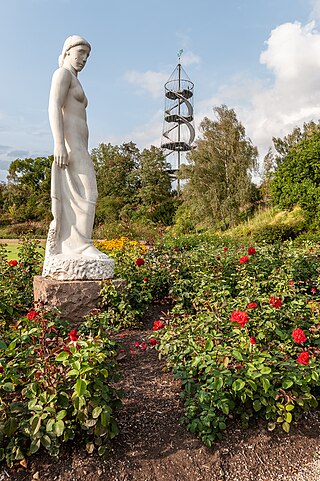
The Killesbergpark is an urban public park of half a square kilometre in Stuttgart, Germany. It is just north of the state capital, where Killesberg is a quarter of the borough of Stuttgart-Nord (North).
Stuttgart-West is one of the five inner districts of the Baden-Württemberg state capital Stuttgart and is located in the western part of the Stuttgart basin, which forms a kind of bay. The district also includes the extensive forest areas Rotwildpark and Solitude and, in small parts, the Kräherwald. It is bordered in the south by the ridge of the Hasenberg and its extension, the Karlshöhe, and in the north by the ridge of the Kräherwald.
The Johanneskirche is a Protestant church in Zuffenhausen, a district of Stuttgart, Germany. The building is registered as an architectural monument with the Baden-Württemberg State Office for the Preservation of Monuments. The parish belongs to the Stuttgart church district of the Evangelical Church in Württemberg.
9. Karl Kaufmann
A Stolperstein is a ten-centimetre (3.9 in) concrete cube bearing a brass plate inscribed with the name and life dates of victims of Nazi extermination or persecution. Literally, it means 'stumbling stone' and metaphorically 'stumbling block'.
10. Museum Hotel Silber
The Hotel Silber, also known as the Hotel Silber or Hotel Silber for short, is a place of remembrance in the Hotel Silber in Stuttgart with a permanent exhibition on the topic of "Police, Gestapo and Persecution". The exhibition deals with police persecution from the Weimar Republic to the time of the Federal Republic of Germany, in particular the persecution by the Gestapo during the Nazi era in the area of Württemberg and Hohenzollern.
11. Tempelgesellschaft in Deutschland
The German Templer Society, also known as Templers, is a Radical Pietist group that emerged in Germany during the mid-nineteenth century, the two founders, Christoph Hoffmann and Georg David Hardegg, arriving in Haifa, Palestine, in October 1868 with their families and a few fellow Templers in order to establish a colony. Templer theology is rooted in the legacy of preceding centuries during which various Christian groups undertook to establish the perfect Christian religion in preparation for Christ's promised return. The movement was founded by Christoph Hoffmann, [1815-1885] who believed that humanity's salvation lay in the gathering of God's people in a Christian community. He also believed that the second coming of Christ was imminent, and that according to Biblical prophecy it would take place in Jerusalem, where God's people were to gather as a symbol of the rebuilding of the temple.
12. Haus der Geschichte Baden-Württemberg
The Haus der Geschichte Baden-Württemberg is a museum of the state of Baden-Württemberg in Stuttgart, Germany. It is located on the "Stuttgart Culture Mile" in Konrad-Adenauer-Straße between the Staatsgalerie and the University of Music.
Wikipedia: Haus der Geschichte Baden-Württemberg (DE), Website
13. Hasenberg
The Hasenberg is a district of the Stuttgart-West district and at the same time one of the highest elevations in Stuttgart at 458.8 m above sea level. The mountain rises from the southwest into the Stuttgart basin and forms the upper part of a ridge that forms the border between the Nesenbach valley to the south and the Vogelsangbach basin to the north. In front of the city centre, separated by a saddle, is the Karlshöhe. Behind the Karlshöhe, the two valleys unite. In the western connection of the Hasenberg begins the Red and Wild Boar Park, the largest contiguous forest area in the state capital.
14. Leonhardskirche
The Leonhardskirche in Stuttgart is the second oldest church foundation in the old town of Stuttgart and today the centre of the Evangelical Leonhard parish of Stuttgart within the Stuttgart church district of the Evangelical Church in Württemberg.
15. Städtisches Lapidarium
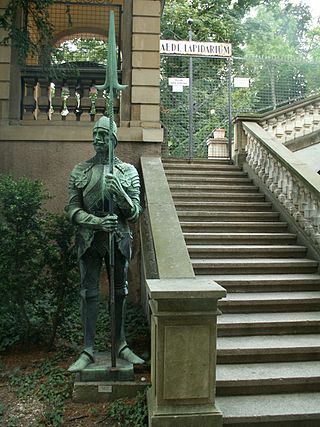
The Städtisches Lapidarium Stuttgart is an open-air museum in the park of the former Villa Ostertag-Siegle in Stuttgart. More than 200 mostly stone testimonies from five centuries of Stuttgart's city history are exhibited in the lapidarium, as well as the Roman collection of antiquities by Carl von Ostertag-Siegle (1860–1924).
16. Weißenburgpark
Weißenburgpark is a five-hectare green space in the Stuttgart-Süd district in the Bopser district. On a hill in the park are the so-called tea house and the marble hall, which are now used as excursion restaurants and event venues, respectively. The park itself is laid out with several walking paths and seating areas to linger.
17. Nymphengruppe
The Water and Meadow Nymph is a sculpture by Johann Heinrich Dannecker, which was first executed in 1810–1815 by Friedrich Distelbarth under Dannecker's supervision. It is often referred to as the nymph group or Dannecker's nymph group, in older literature also as the meadow nymph, crowning the water nymph out of gratitude.
18. Markuskirche
St. Mark's Church is a Protestant church in Stuttgart's southern district on Filderstraße, at the corner of Römerstraße, in the Heusteigviertel. It is used by the Protestant parish of Markus-Haigst as a parish church. The Fangelsbach cemetery borders on the church grounds.
19. Markthalle
Die Markthalle Stuttgart wurde 1914 im Stadtzentrum Stuttgarts eröffnet. Heute ist die Markthalle ein Lebensmittelmarkt im gehobenen Preissegment. Sie bietet insgesamt 6800 Quadratmeter Nutzfläche für Dienstleister und Händler, davon im Erdgeschoss 3500 Quadratmeter für Verkaufsstände. 2010 existierten 37 verschiedene Verkaufsstände. Der stützenfreie Raum der Halle ist 60 Meter lang und 25 Meter breit. An der Sporerstraße und in der Markthalle befinden sich mehrere Restaurants.
20. Jubiläumssäule
The Jubilee Column is a monument that was erected on the Schloßplatz in Stuttgart from 1841 to 1846 on the occasion of the 25th anniversary of the reign and the 60th birthday of King Wilhelm I of Württemberg. The column, with a total height of 32.6 meters, consists of a 9-meter-high pedestal with four reliefs with historical scenes and four allegorical figures at the corners, an 18.5-meter-high granite column and a 5.1-meter-high statue of the Roman goddess Concordia.
21. Hospitalkirche
The Hospital Church is the third large medieval church foundation in the old town of Stuttgart and today the centre of the "Evangelical Hospital Parish of Stuttgart" within the church district of Stuttgart.
22. Ruine des Neuen Lusthauses
From the point of view of architectural history, the New Lusthaus in Stuttgart, which has not been preserved, is considered one of the most important buildings of the German late Renaissance and served as a place of courtly festivals and celebrations. In 1954, the Stuttgart chronicler and monument conservator Gustav Wais described the original building as "one of the noblest creations of the German Renaissance, which, if we still possessed it today, would be Stuttgart's main attraction". Both the history of the building and the appearance are well known due to the numerous traditions.
23. Jupitergigantensäule von Hausen an der Zaber
The Jupiter Giant Column of Hausen an der Zaber is a consecration monument to Jupiter and Juno, which a Roman citizen had erected around the year 200 on his estate in Hausen an der Zaber. During an excavation in 1964, the almost completely preserved remains of the column were recovered and placed in the collection of the Roman Lapidarium Stuttgart.
Wikipedia: Jupitergigantensäule von Hausen an der Zaber (DE)
24. Universelles Leben
Universal Life is the name of a controversial new religious movement based in Marktheidenfeld, Germany, which is described by members as a part of the new revelation movement. The group was originally called Heimholungswerk Jesu Christi, but has been known as Universal Life since 1984.
25. Gruhe
A Ruhstein, also called Ruhestein, Ruhbank, Grubstock, Gruhe, Gruhbank, Krugstatt or Gruegstätt as well as Raststein, is a single or multi-part bench that was used in earlier times for load carriers to rest. While there were originally comparable devices made of wood, the benches that have survived to this day are made of stone. As witnesses of earlier forms of transport and old traffic routes, many benches are now considered small or field monuments.
26. Villa Moser
The Villa Moser was a country house villa in Stuttgart, built in 1875 by Johann Wendelin Braunwald for the chocolate manufacturer Eduard Otto Moser in the park of the Leibfried Garden. In 1944, the villa was destroyed to the ground in an air raid.
27. Carl Benz Center
The Carl Benz Center is an event center opened in 2006 in the Neckarpark in Bad Cannstatt (Stuttgart). The investor in the 75-million-euro project is Rudolf Häussler. The Carl Benz Center offers around 20,000 square metres of usable space, of which VfB Stuttgart alone uses 4,000.
28. Gate of Hope
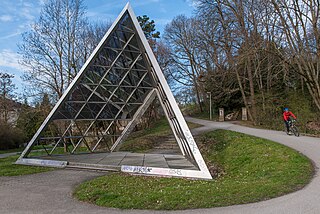
The Gate of Hope in Stuttgart is an architectural sculpture by the American conceptual artist Dan Graham, a gate designed as a regular tetrahedron made of stainless steel profiles and one-way mirrors. It is located at the end of the Lodzer Steg, which leads from Rosenstein Park to Leibfriedscher Garten.
29. Liebesvase
The Love Vase is a monumental decorative vase in sandstone by Friedrich Distelbarth in the chamber theatre wing of the Neue Staatsgalerie in Stuttgart. The vase is constructed in the style of the Medici vase and bears a bas-relief with the Allegory of the Ages of Love.
30. Veitskapelle
The St. Vitus Chapel is a Protestant church built in the late Gothic style in the Stuttgart district of Mühlhausen am Neckar. The exceptionally well-preserved wall and vault paintings from around 1400 and the medieval altars of the St. Vitus Chapel, which convey the largely original impression of a church of the late Middle Ages, are of art-historical importance.
31. Staatliches Museum für Naturkunde Stuttgart
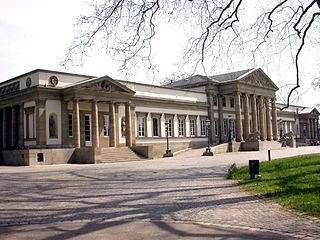
The Museum Schloss Rosenstein is a museum for biology in Stuttgart, Germany. It is part of the Stuttgart State Museum of Natural History, which also includes the Museum am Löwentor and several branch offices. The Natural History Museum in Rosenstein Castle is located in the Rosenstein Park of the same name and has about 115,000 visitors a year.
32. St. Fidelis
St. Fidelis Church is a Catholic church in the west of Stuttgart. The gabled building is slightly elevated above street level and its main façade recedes from the street line. An outer wall with turrets and two entrance gates and a forecourt with arched walkways separate the church from the street. The three-aisled hall church without tower and transept is spanned by reinforced concrete trusses and crowned by a gable roof. Inside, the church presents itself as a simple and unadorned hall with a high, coffered wooden barrel vault, low, windowless side aisles and a light-flooded central nave with high glass windows.
33. Schillerdenkmal
The Schiller monument in front of the Great House of the Württemberg State Theatre in Stuttgart was designed by the Stuttgart sculptor Adolf von Donndorf, executed in marble by Richard Schönfeld and erected in 1913. The statue shows an idealized Schiller image, according to Donndorf's intention "the immortal Schiller, [...] descending from Olympus with the golden Leyer."
34. Galatea-Brunnen
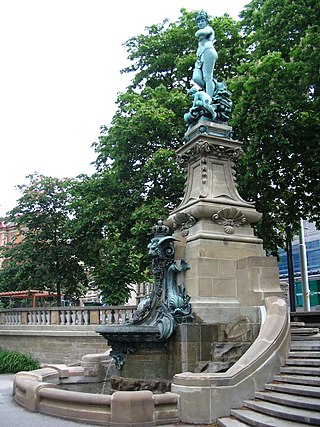
The Galatea Fountain is a fountain on a viewing platform at Eugensplatz in Stuttgart-Mitte. It was created in 1890 by the architect and sculptor Otto Rieth and the ore caster Paul Stotz (1850–1899) and is one of the most magnificent fountains in the city.
35. Landesmuseum Württemberg
The Landesmuseum Württemberg is the main historical museum of the Württemberg part of the German state of Baden-Württemberg. It emerged from the 16th-century “Kunstkammer” of the dukes, later kings, of Württemberg who resided in Stuttgart. As a museum it was founded in 1862 by King William I.
36. Deutsches Landwirtschaftsmuseum
The German Agricultural Museum (DLM) in Stuttgart-Hohenheim is considered one of the most extensive collections of agricultural equipment and machinery in the German-speaking world. On a total of 5,700 square metres of covered exhibition space, the DLM documents the technical change in agriculture from the simple hand-held device to the modern self-propelled vehicle. The museum concept presents the developments in the history of production and documents the constant change in agricultural history as well as its causes and connections.
Wikipedia: Deutsches Landwirtschaftsmuseum (Hohenheim) (DE), Website
37. Schiller-Denkmal
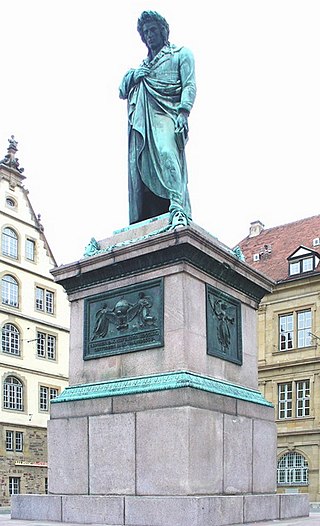
The Schiller Monument on Schillerplatz in Stuttgart was the first large poet monument in Germany and the first important Schiller monument. The statue, a major work of European sculpture of Classicism, was cast in bronze by Johann Baptist Stiglmaier in Munich after a model by the Danish sculptor Bertel Thorvaldsen. The architectural design of the monument was based on the plans of Nikolaus von Thouret and Gottlieb Bindesbøll. The unveiling of the monument took place in 1839.
38. Stauffenberg Erinnerungsstätte
The Stauffenberg Memorial in Stuttgart's Old Palace is dedicated to the Hitler assassin Claus Schenk Graf von Stauffenberg and his brother and co-conspirator Berthold. The exhibition was initiated by the then Baden-Württemberg Minister of State Christoph Palmer and conceived and realised by the Haus der Geschichte Baden-Württemberg on behalf of the Baden-Württemberg State Foundation.
Wikipedia: Stauffenberg-Erinnerungsstätte im Stuttgarter Alten Schloss (DE), Website
39. Schwebender Merkur
The Mercury Column is a former water tower in Stuttgart, which was built in 1598 according to the plans of Heinrich Schickhardt and has been crowned by a gilded statue of Mercury since 1862. The tower is connected to the northeast corner of the Old Chancellery, a building between Schillerplatz and Schlossplatz. The corner tower is designed as an Ionic column and carries a capital decorated with rich ornaments according to the design of Wendel Dietterlin, above which a grid-protected viewing platform is attached. The column ends in a stump with a hemisphere that a "floating Mercury" touches with one foot.
40. Robert-Bosch-Haus
The Robert Bosch House in Stuttgart was the former residence of the manufacturer Robert Bosch until his death in 1942. After the Second World War, it served as a guest house for the Americans and later as a consulate for the French. The Robert Bosch Stiftung has had its headquarters here since 1986. The house is located in the middle of a park at Heidehofstraße 31 in the Gänsheide district of Stuttgart's East district.
41. Hohe Carlsschule (Akademie)
Hohe Karlsschule was the strict military academy founded by Karl Eugen, Duke of Württemberg in Stuttgart, Germany. It was first founded in 1770 as a military orphanage, but then converted into a military academy in 1773 for the duke.
42. Bärenschlössle
The Bärenschlössle in Stuttgart's Rotwildpark was originally a pleasure palace and now serves as a restaurant. It was named after the bear stream that flowed near it. The Bärenschlössle and the lakes in the forest belong to the "district" of the Wildpark in the district of Stuttgart-West.
43. Grabkapelle auf dem Württemberg
The Württemberg Mausoleum is a mausoleum located on the Württemberg, in the Rotenberg borough of Untertürkheim, in Stuttgart. It was designed by Giovanni Salucci for King William I of Württemberg to house the remains his second wife, Catherine Pavlovna of Russia. Construction elapsed over four years, from 1820 to 1824, while work on its decor lasted another four years. The remains of William I, Catherine, and their daughter Maria Friederike Charlotte, are housed in the mausoleum.
44. Linden-Museum
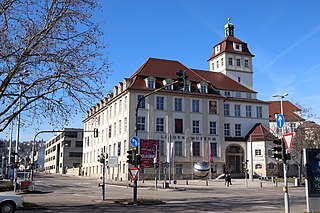
The Linden Museum is an ethnological museum located in Stuttgart, Germany. The museum features cultural artifacts from around the world, including South and Southeast Asia, Africa, the Islamic world from the Near East to Pakistan, China and Japan, and artifacts from North and Latin America and Oceania.
45. Feuerwehrmuseum
The Stuttgart Fire Brigade Museum, located in a former Assmann & Stockder factory building in the Stuttgart district of Münster, shows the development of firefighting from the unorganised extinguishing of fires to the first ducal and royal fire regulations, the founding of the volunteer fire brigades in Stuttgart and the establishment of a permanently manned professional fire brigade – today's Stuttgart Professional Fire Brigade.
46. Hasenbrünnele
Weilimdorf, until 1955 known as "Weil im Dorf", is the north-western borough (Stadtbezirk) of the German city and capital of Baden-Württemberg, Stuttgart. Weilimdorf, covering an area of 12.6 square kilometres (4.9 sq mi) with a population of around 30,000, borders the Stadtbezirke of Zuffenhausen, Feuerbach, Stuttgart-West, and the towns of Gerlingen, Ditzingen, and Korntal-Münchingen in the Ludwigsburg district. Weilimdorf became part of Stuttgart in 1933 amidst the hardship of the economic instability of the 30s in Germany. The city district is made up by six Stadtteile: Weilimdorf, Bergheim, Giebel, Hausen, Weilimdorf-Nord and Wolfbusch and is home to an expanding commercial area.
47. Fruchtkasten
The so-called Fruchtkasten, a late Gothic stone building on Schillerplatz, is one of the oldest surviving buildings in Stuttgart. Nowadays, the house is used as a part of the Württemberg State Museum as the House of Music in the Fruchtkasten.
48. Weinbaumuseum Stuttgart
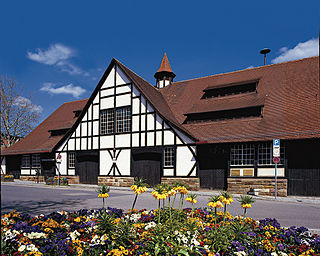
The Stuttgart Museum of Viticulture in Stuttgart-Uhlbach is showing an exhibition on historical and modern viticulture in Stuttgart. The museum's task is to present the regional characteristics of wine production. The museum belongs to the state capital of Stuttgart.
49. Universitätssternwarte Pfaffenwald
The Pfaffenwald University Observatory is an observatory that has existed since 1934 in the high-altitude district of Vaihingen in Stuttgart, Germany, and was donated to the University of Stuttgart in 1972. The observatory originally belonged to the private property of the manufacturer Hermann Fellmeth, who had it built near his country house in the Vaihingen Pfaffenwald.
50. Burgholzhof-Turm
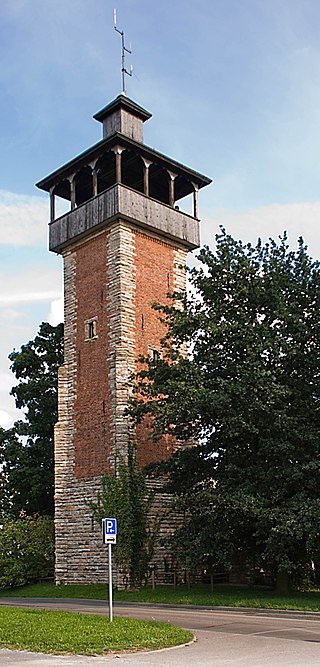
The Observation Tower Burgholzhof in Burgholzhof, since 1998 a separate community within Bad Cannstatt in Stuttgart, Baden-Württemberg, Germany, is an 1891 brick observation tower constructed by the Cannstatt municipal architect Friedrich Keppler on behalf of the Verschönerungsverein Cannstatt e. V., in the style of a Roman tower, at an elevation of 359 meters (1778 ft) above sea level, at 9°11'41 east and 48°49'08" north. It was formally opened on 19 September 1891. It has extensive views over East Stuttgart, Bad Cannstatt and along the Neckar valley as far as Esslingen am Neckar.
51. Heimatmuseum
The local history museum, called Heimatmuseum im Spitalhof Möhringen, in Stuttgart-Möhringen was opened in 1936 on the main floor of the Spitalhof of the Katharinenhospital in Esslingen, built in 1469.
52. Schicksals-Brunnen
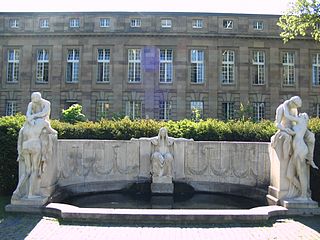
The Schicksalsbrunnen is a fountain in the Upper Palace Garden in Stuttgart, Germany. It was designed in 1914 by the sculptor Karl Donndorf (1870–1941) in Art Nouveau style and is considered one of the most important fountains of this style in Germany.
53. Schellenturm
The Schellenturm is one of the sparse remains of Stuttgart's city fortifications. It was named after the bell workers, convicted convicts who were used for public labor service and wore bells on their clothes.
54. Points of View
Points of View is the title of a series of sculptures by sculptor Tony Cragg from 2002. The largest version of the works in this series consists of three columnar structures about 12.5 meters high, which are sometimes placed at the corners of an equilateral triangle. Numerous variants in different sizes and made of different materials can be found in several public and private locations and collections in Europe.
55. Junobrunnen
The Juno Fountain is a fountain in the Kursaal grounds in Stuttgart-Bad Cannstatt. It was designed in 1910 by the sculptor Emil Kiemlen (1869–1956) in the neoclassical style and executed by the Stuttgart stone sculptor Willi Schönfeld.
56. Hirsch
The deer and lion are two life-size statues that flank the entrance to the courtyard of the New Palace in Stuttgart on high granite pedestals. The two Württemberg heraldic animals were designed and modelled by the Stuttgart court sculptor Antonio Isopi, cast in iron at the Wasseralfingen ironworks and erected in 1823.
57. St. Michael
The Roman Catholic parish church of St. Michael is located in Sillenbuch, a district of Stuttgart. The building is registered as an architectural monument with the Baden-Württemberg State Office for the Preservation of Monuments. The parish belongs to the city deanery of Stuttgart in the diocese of Rottenburg-Stuttgart.
58. Ehemalige Vorburg
Hedelfingen Castle is a hilltop castle that was demolished in the 14th century, which was located on the Wangener Höhe, a ridge between the Neckar and Dörrbach rivers in the east of Stuttgart. The castle was located in a larger parcel about one kilometre northwest of the municipality of Hedelfingen. The Flürstück still bears the name "Burg" today and extends to the north into the municipal area of Wangen.
59. Engelburg
The ruins of Engelburg, formerly also called Biberburg, are the remains of a hilltop castle on a hilltop above the district of Mühlhausen north of Mönchfeldstraße in the state capital Stuttgart in Baden-Württemberg.
60. Graevenitz-Museum
The Graevenitz Museum, also known as Museum Fritz von Graevenitz, has been home to selected works by the artist Fritz von Graevenitz since 1971. It is located in a cavalier house in Stuttgart-West in the Solitude district near Gerlingen.
61. Ferdinand-Leitner-Steg
The Ferdinand-Leitner-Steg is a pedestrian bridge in Stuttgart that crosses the nine-lane Schillerstraße and connects the Schlossgarten with the Upper Schlossgarten. Its southern end is in the Upper Palace Garden near the Schauspielhaus. Its northern end forks into a footbridge to the walkway through the castle garden and a footbridge to the walkway towards the main station.
62. StadtPalais
The Stadtmuseum Stuttgart is a museum about the history of Stuttgart. It was opened in April of 2018 in the Wilhelm Palais, the former residence of Württembergs last King William II. The Stadtbibliothek Stuttgart, the public library of the city of Stuttgart, was also housed there from 1965 until 2011.
Wikipedia: Stadtmuseum Stuttgart (EN), Website, Facebook, Youtube
63. Herkules
Hercules and Minerva are two colossal statues that flank the entrance portico of the main wing of the New Palace in Stuttgart on stone pedestals. In 1759, Pierre François Lejeune, the first sculptor of Duke Carl Eugen of Württemberg, created these statues of the divine hero Hercules and the goddess Minerva.
Wikipedia: Herkules und Minerva (Schlossplatz Stuttgart) (DE)
64. Liebfrauenkirche
The Church of Our Lady in the district of Bad Cannstatt in the Baden-Württemberg state capital Stuttgart is a Roman Catholic church that is a cultural monument under monument protection under the Monument Protection Act. The parish of the Liebfrauenkirche belongs to the Diocese of Rottenburg-Stuttgart.
65. Killesbergturm
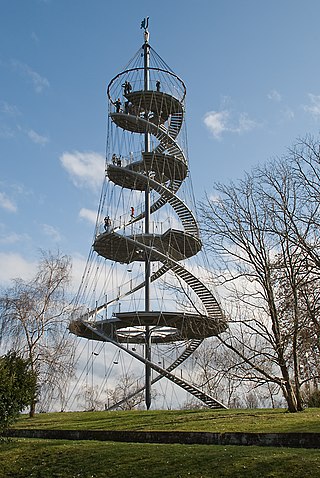
The Killesberg Tower is a 40-meter high observation tower located in the Killesberg Park in Stuttgart, Germany. Originally planned for the 1993 World Horticultural Exposition, an interruption in the design process delayed its erection until 8 years later in 2001.
66. Siebener Denkmal
The Seven Monument with the "Siebener-Brünnle" in Stuttgart (Rotebühl-/Herzogstraße) is a monument with an obelisk and was erected in honour of the soldiers of the Infantry Regiment Kaiser Friedrich, King of Prussia (7th Württemberg) No. 125 who died in the First World War according to a design by the sculptor Fritz von Graevenitz and consecrated in 1927.
67. Uffkirche
The Uffkirche, formerly Zu unserer lieben Frauen, today the cemetery chapel of the Uff churchyard, is a protected cultural monument according to the Monument Protection Act in Bad Cannstatt, a district of the state capital Stuttgart of Baden-Württemberg. It belongs to the Evangelical Church in Württemberg. Its name refers to the extinct village of Uffkirchen.
68. Matthäuskirche
The Protestant St. Matthew's Church is located in Heslach, a district in the Stuttgart-Süd district of the Baden-Württemberg state capital Stuttgart. The building is registered as an architectural monument with the Baden-Württemberg State Office for the Preservation of Monuments. The parish of Stuttgart-Heslach belongs to the Stuttgart church district of the Evangelical Church in Württemberg. The church is named after Matthew the Evangelist.
69. St. Ottilia
The Roman Catholic parish church of St. Ottilia is located in Münster, a district of Stuttgart. The building is registered as an architectural monument with the Baden-Württemberg State Office for the Preservation of Monuments. The parish belongs to the city deanery of Stuttgart in the diocese of Rottenburg-Stuttgart.
70. Dischinger Burg
Weilimdorf is a district in the northwest of Stuttgart, Germany. It borders on the Stuttgart districts of Zuffenhausen, Feuerbach and Stuttgart-West as well as the cities of Gerlingen, Ditzingen and Korntal-Münchingen.
71. Christus König
The Roman Catholic Church of Christ the King is located in Vaihingen, a district of the state capital Stuttgart of Baden-Württemberg. The building is registered as an architectural monument with the Baden-Württemberg State Office for the Preservation of Monuments. The parish belongs to the Stuttgart city deanery of the Diocese of Rottenburg-Stuttgart.
72. Alte Kirche
The Old Parish Church in the Stuttgart district of Hedelfingen is now used as a cemetery chapel. The former Protestant parish church is registered as an architectural monument with the Baden-Württemberg State Office for the Preservation of Monuments.
73. Salvatorkirche
The Roman Catholic Salvatorkirche is located in the Giebel district of the Weilimdorf district of the state capital Stuttgart of Baden-Württemberg. The building is registered as an architectural monument with the Baden-Württemberg State Office for the Preservation of Monuments. The parish belongs to the Stuttgart city deanery of the Diocese of Rottenburg-Stuttgart.
Wikipedia: Salvatorkirche (Stuttgart-Weilimdorf) (DE), Website
74. Kreuzkirche
The Protestant Kreuzkirche is located in the residential district of Heslach in the Stuttgart-Süd district of the state capital Stuttgart of Baden-Württemberg. The building is registered as an architectural monument with the Baden-Württemberg State Office for the Preservation of Monuments. The church belongs to the parish of Stuttgart-Heslach in the church district of Stuttgart of the Evangelical Church in Württemberg.
75. Pauluskirche
The Protestant St. Paul's Church is located in Zuffenhausen, a district of the Baden-Württemberg state capital Stuttgart. The building is registered as an architectural monument with the Baden-Württemberg State Office for the Preservation of Monuments. The parish belongs to the Stuttgart church district of the Evangelical Church in Württemberg. The church is named after Paul of Tarsus.
76. Mariä Himmelfahrt
The Roman Catholic parish church of the Assumption of the Virgin Mary is a protected cultural monument according to the Monument Protection Act. It is located in Degerloch, a district of the state capital Stuttgart in Baden-Württemberg. The parish belongs to the city deanery of Stuttgart in the diocese of Rottenburg-Stuttgart.
77. Lutherkirche
The Luther Church is a protected cultural monument according to the Monument Protection Act in Bad Cannstatt, a district of the state capital Stuttgart of Baden-Württemberg. The Lutheran parish belongs to the Stuttgart church district of the Evangelical Church in Württemberg.
78. St. Barbara
The Roman Catholic Church of St. Barbara is located in Hofen, a district of the Mühlhausen district of the state capital Stuttgart of Baden-Württemberg. The building is registered as an architectural monument with the Baden-Württemberg State Office for the Preservation of Monuments. The parish belongs to the Stuttgart city deanery of the Diocese of Rottenburg-Stuttgart. The church patron saint is Barbara of Nicomedia.
79. Stadtkirche
The Protestant town church of St. Blasius is located in Vaihingen, a district of Stuttgart. The building is registered as an architectural monument with the Baden-Württemberg State Office for the Preservation of Monuments. The parish belongs to the Stuttgart church district of the Evangelical Church in Württemberg. The church is named after Blaise of Sebaste.
80. Michaelskirche
The Protestant St. Michael's Church is a protected cultural monument according to the Monument Protection Act. It is located in Degerloch, a district of the state capital Stuttgart in Baden-Württemberg. The parish belongs to the Stuttgart church district of the Evangelical Church in Württemberg.
81. Andreaskirche
St. Andrew's Church is the Protestant parish church of Uhlbach, a district of Stuttgart, Germany. The building is registered as an architectural monument with the Baden-Württemberg State Office for the Preservation of Monuments. The parish belongs to the Stuttgart church district of the Evangelical Church in Württemberg.
82. Kreuzkirche
The Protestant Kreuzkirche is located in Hedelfingen, a district of the state capital Stuttgart of Baden-Württemberg. The building is registered as an architectural monument with the Baden-Württemberg State Office for the Preservation of Monuments. The parish belongs to the Stuttgart church district of the Evangelical Church in Württemberg.
83. Domkirche St. Eberhard
The Cathedral Church of St. Eberhard in Stuttgart has been the second cathedral church in the Diocese of Rottenburg-Stuttgart since 1978. In Rottenburg is the Cathedral of St. Martin. The survey was carried out on the occasion of the 150th anniversary of the diocese and its renaming to the Diocese of Rottenburg-Stuttgart.
Share
How likely are you to recommend us?
Disclaimer Please be aware of your surroundings and do not enter private property. We are not liable for any damages that occur during the tours.
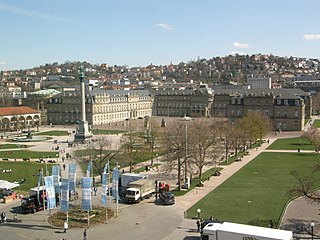

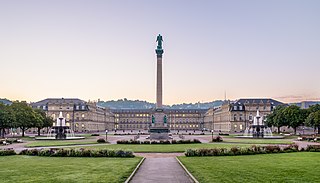
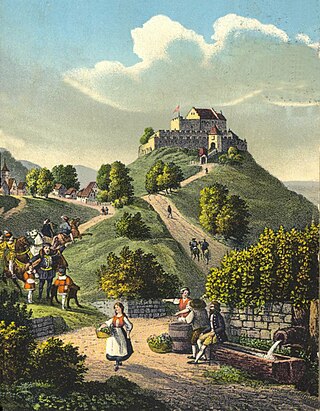
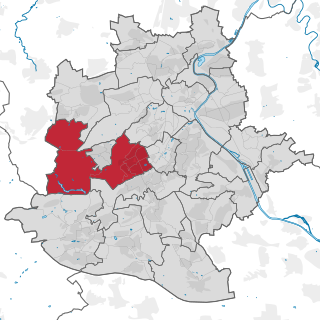
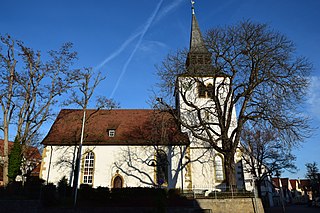
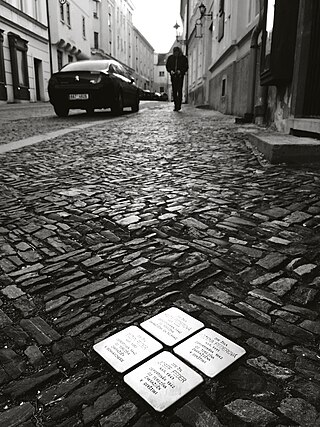
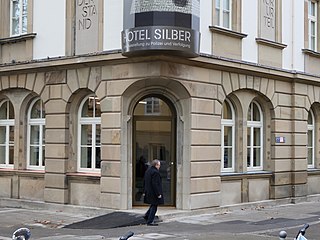
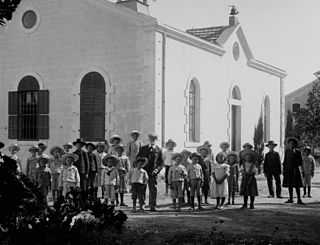
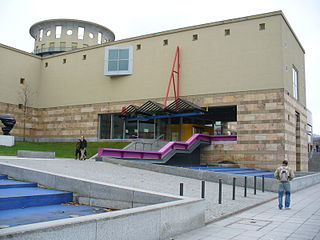
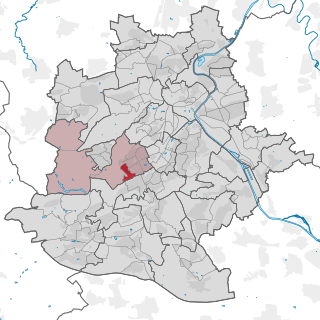
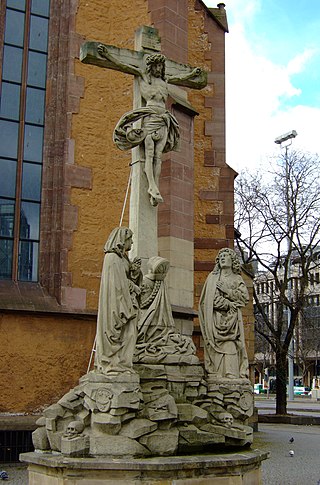
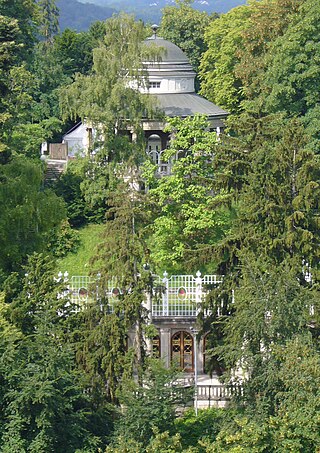
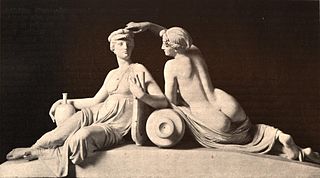
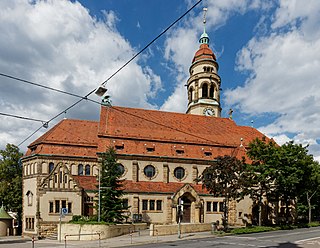
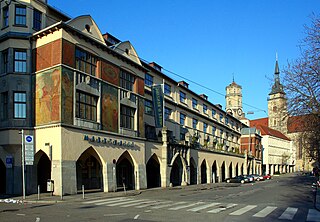

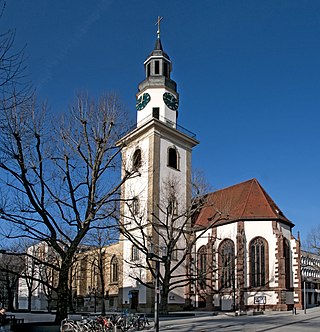
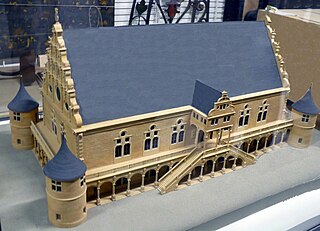
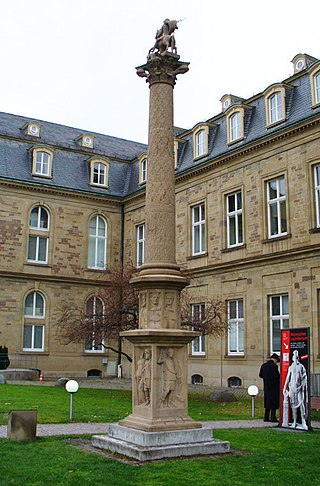
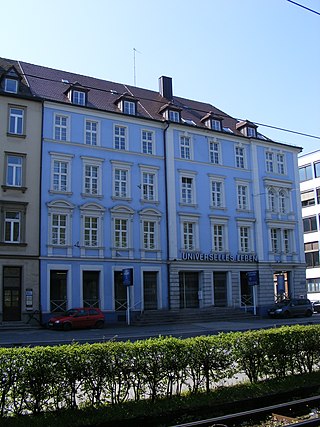
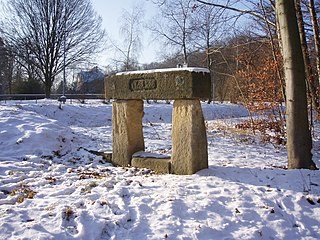
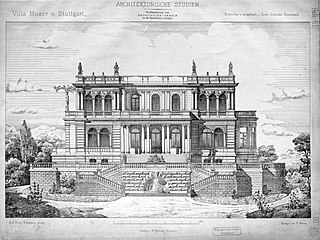
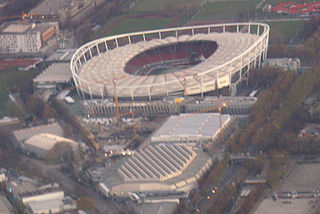
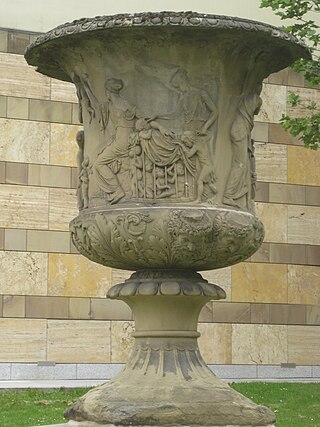
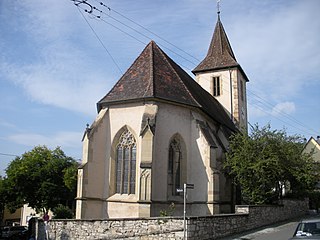
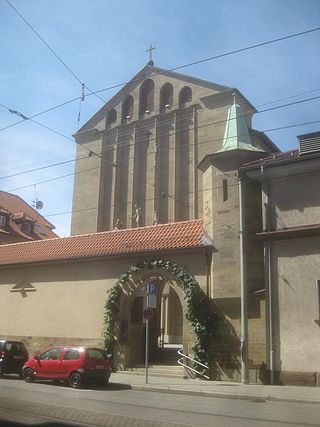
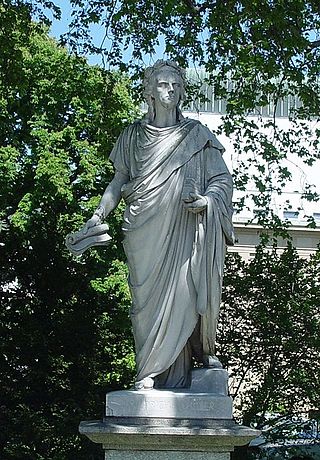
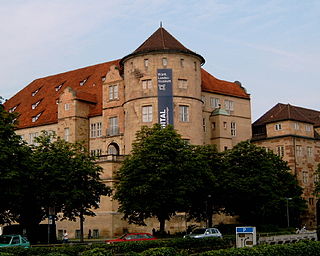
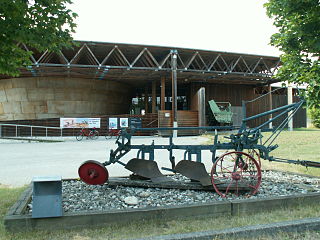

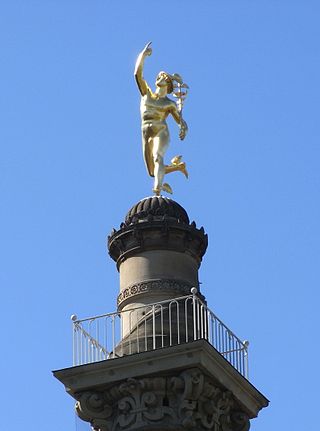
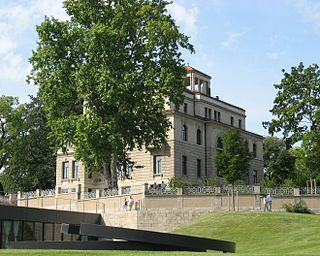
.jpg)
